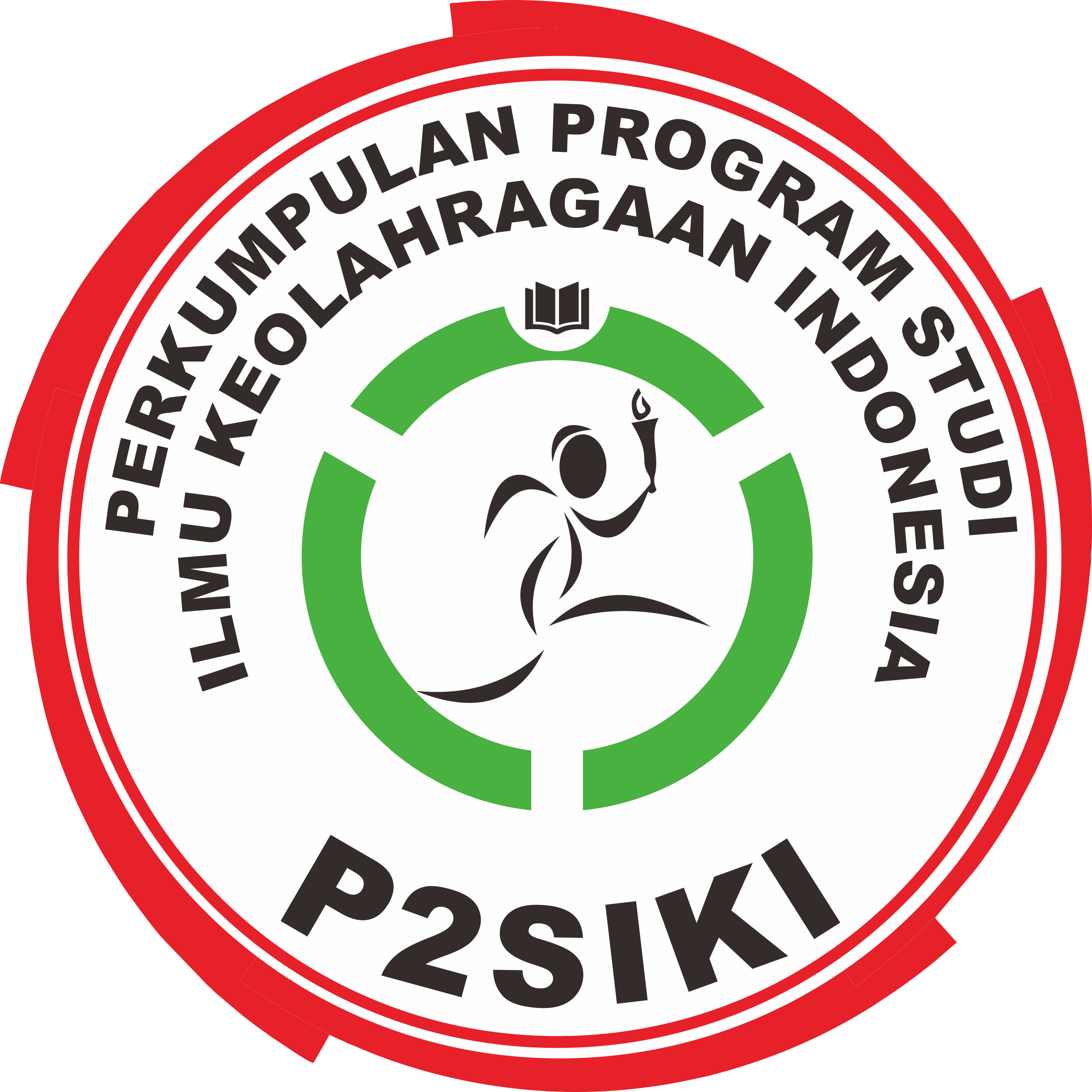Pengaruh Metode Latihan Berbeban Squats terhadap Prestasi Lompat Jangkit Ditinjau dari Rasio Panjang Telapak Kaki dan Tinggi Badan
(1) Universitas Sebelas Maret, Indonesia
(2) Universitas Sebelas Maret, Indonesia
(3) Universitas Sebelas Maret, Indonesia
Abstract
Tujuan utama penelitian ini adalah untuk mengetahui : (1) Pengaruh latihan berbeban Squats terhadap prestasi lompat jangkit. (2) Perbedaan prestasi lompat jangkit antara mahasiswa yang memiliki rasio panjang telapak kaki dan tinggi badan, besar, sedang dan kecil. Metode penelitian yang digunakan adalah metode eksperimen dengan rancangan factorial 1 X 3. Sempel penelitian adalah mahasiswa putra Jurusan Pendidikan Olahraga dan Kepelatihan Fakultas Keguruan dan Ilmu Pendidikan Universitas Sebelas Maret Surakarta sebanyak 15 mahasiswa. Variabel penelitian ini terdiri dari 2 variabel bebas dan 1 variabel terikat. Variable bebas dalam peneltian ini adalah : (1) metode latihan sebagai variable manipulatif, yaitu latihan berbeban latihan berbebansquats (2) rasio panjang telapak kaki dan tinggi badan besar, sedang, dan kecil. Variable terikat dalam peneltian ini adalah prestasi lompat jangkit. Teknik analisis data yang digunakan adalah Analisis Variansi dua jalur dan uji lanjut menggunakan uji-t metode LSD (Least Significant Difference), pada taraf signifikansi 5% (α=0,05). Komputasi pada Analisis Varians menggunakan bantuan program statistik SPSS 20.Hasil penelitian adalah :(1) Ada pengaruh metode latihan berbeban terhadap prestasi lompat jangkit. Metode latihan berbeban Squat memberikan pengaruh peningkatan sebesar 3%terhadap prestasi lompat jangkit. (2) Tidak ada perbedaan prestasi lompat jangkit antara mahasiswa yang memiliki rasio panjang telapak kaki dan tinggi badan kategori besar, sedang, dan kecil. 0,083> 0.05.Kelompok mahasiswayang memiliki rasio panjang telapak kaki dan tinggi badan kategori kecil dengan perlakuan metode latihan berbeban squat memiliki prestasi lompat jangkit paling baik di antara delapan kelompok lainnya, dengan rata-rata prestasi sebesar 1100 cm.
The main objective of this study is to determine: (1) Effect of exercise load Squats against the triple jump achievement. (2) The difference in triple jump achievement between students who have a foot length ratio and height, large, medium and small. The method used is an experimental method with factorial design 1 X 3. The sample of the study are male students Department of Physical Education and Coaching the Faculty of Education University of March Surakarta as many as 15 students. The variables of this study consisted of two independent variables and one dependent variable. Free variable in this research are: (1) a method of exercise as a manipulative variable, namely the training burden laden exercise squats (2) the ratio of length and height foot large, medium, and small. Dependent variable in this research is the triple jump achievement. Data analysis technique used is Variance Analysis of two lanes and a further test using t-test method of LSD (Least Significant Difference), at a significance level of 5% (α = 0.05). Computing the Analysis of Variance using the help of statistical program SPSS 20. The results are: (1) There is an effect of exercise methods to achievement loaded triple jump. The method of training load Squat effect an increase of 3% on the performance of triple jump. (2) There is no difference between student achievement triple jump where the ratio of length of the foot and height categories of large, medium, and small. 0.083> 0.05. The student group that has a long ratio foot height and a small category with the treatment method loaded squat exercise has triple jump accomplishment of any of the eight other groups, with an average achievement of 1100 cm.
Keywords
Full Text:
PDFReferences
______,1993. Theory and Methodology of Training.The Key to Athletic Performance. Kendall/Hunt Publishing Company.
______. 1993, Metodologi Pelatihan. Yogyakarta : FPOK IKIP.
______. 1993. The physiological Basic For Exercise and Sports. Winconsin : WBC. Brown and Bechmak.
______. 1995. Pembinaan Kekuatan Kondisi Fisik Dalam Olahraga. Semarang: Effhar & Dahara Prize Offset.
______. 1998. Physiological Basic for Exercise and Sport, New York: McGraw-Hill Companies, Inc.,
______.1986.Atletik Prinsip dalam Latihan Lompat Tinggi, Jauh, Jangkit dan galah Semarang : Dahara Print.
______.1990.Theory and Methodology of Training. Kendall/Hant: IOWA of University.
A Hamidsyah Noer. 1993. Materi Pokok Kepelatihan Dasar. Jakarta : Depdikbud RI Dirjen Dikti Proyek Pembinaan Tenaga Kependidikan.
Aip Syarifuddin.1992. Pendidikan Jasmani dan Kesehatan.Jakarta:Depdikbud.
Ballesteros, J, M., 1979. Pedoman Latihan Dasar Atletik. Alih Bahasa SDS, Jakarta: PB PASI.
Barthles. 1981. Physiological Basic of Physical Education and Athletics. London: W.B. Saunders Company.
Beachle Thomas R, Groves Barney R. 2000. Latihan Beban. Jakarta : PT Raja Grafindo Persada.
Benrhart, Qunter. 1993. Atleik : Prinsip Dasar Latihan Lompat Tinggi, Lompat Jauh, jangkit dan Galah (Terjemahan). Dahara Pers. Semarang
Bompa Tudor.O and Haff G. Gregory,2009. Theory and Methodology of Training.The Key to Athletic Performance. Kendall/Hunt Publishing Company.
Bompa Tudor.O, 1983.Theori and methodologi of Training. The Key to Atletics Performance Dubugue, lowa : Kendall Hunt. Publishing Company.
Broocks, G.A., Fahey, T.D. 1984. Exercise Physiologi Human Bioenergetics and Its Aplication. Canada: John Willey & Sons Inc.
Brown Lee E, 2007. Strength Training.United States of Amerika : United Graphics.
Derek Boosey. 1980. Conditioning And Technical Training. Australia : Champion Press.
Dikdik Z. S. 2010. Mengajar dan Melatih Atletik.Bandung : PT Remaja Rosdakarya Offset.
Fox, Bowers, Foss.1988. The Psysiological Basis of Physical Education and Athletics.Philadelphia : WB. Sounders Company.
Fox, Edward L. 1984. Sport Physiology. Tokyo : Saunders College Publishing.
Fox, Edward L dan Mathew, DK, 1981. ThePhysiological Basic of Physical Educations and Athletics,4th Edition, Philadelphia : Sounder College Publishing.
Furchan, 1982 ,Pengantar Penelitian dalam Pendidikan. Surabaya : Usaha Nasional.
Harsono.2001. Latihan Kondisi Fisik: Panduan Pelatihan Untuk Pelatih Tingkat Muda.
Harsono.1988. Coaching dan Aspek-aspek Psikologi Dalam Coaching.Jakarta : PT. Raja Grafindo.
Hidayat, Imam. 1997. Biomekanika. FPOK IKIP Bandung.
http://rayzaaulia.blogspot.com/2012/09/antropometri-selanjutnyamari-kita.html
http://www.otot tungkai.co.id ( diakses tanggal 12 april 2014 pukul 14:58)
Isaac, Stephen & Mitchel, William B., 1984.Handbook in Research and Evaluation. San Diego, California : Edits Publishers.
M Furqon H,1996. Latihan Berbeban Untuk Meningkatkan Kekuatan, Power, Daya Tahan, Kelenturan, Pembentukan Dan Kesegaran Tubuh. Surakarta : JPOK FKIP UNS.
M Sajoto. 1988. Perkembangan dan Penbinaan Kondisi Fisik dalam Olahraga. Jakarta : Depdikbud, Dirjen Dikti. P2LPTK
McArdle, W.D., Katch, F.I. and Katch, F.L. 1981. Exercise Physiology. Philadelphia: Lea & Fibiger.
Muhajir. 2014. Pendidikan Jasmani, Olahraga, dan Kesehatan. Jakarta : PT Gelora Aksara Pratama.
Nasution E. D. 2003. Kebugaran dan Kesehatan. Terjemahan Fitness and Health.Sharkey, Brian J. Jakarta : Fajar Interpratama Offset.
O.T. Lukman. 1993. Biomechanics. Penerapan hokum-hukum Dan Prinsip Mekanika.Fakultas Pendidikan Olahraga dan kesehatan IKIP Surabaya.
Russel R. Pate, Clanaghan, Bruce Mc.& Robert Rotella.1993. Dasar-Dasar Ilmiah Kepelatihan. Semarang: IKIP Semarang Press
Soekarman,R. 1987. Dasar Olahraga: Untuk Pembina Pelatih dan Atlet.Jakarta. PT. Indayu. Press.
Sudjana. 1992. Metode Statistika. Bandung. Penerbit Tarsito.
Sudjarwo.1993. Ilmu Kepelatihan Dasar. Surakarta: UNS Press
Suharno HP. 1985. Ilmu Kepelatihan Olahraga. Jakarta : KONI Pusat.
Sukadiyanto. 2011. Pengantar Teori dan Metodologi Melatih Fisik. Yogyakarta : FIK.
Verduci. 1980. Measurement Consept in Phsycal Education, St. Louis : The CV. Mosby Company.
Yusuf Hadisasmita & Aip Syarifuddin, 1996, Ilmu Kepelatihan Dasar. Jakarta : Depdikbut
Yusuf Hadisasmita. 1992. Olahraga Pilihan Atletik. Jakarta : depdikbud Dirjen Dikti Proyek Pembinaan Tenaga Kependidikan.
Refbacks
- There are currently no refbacks.
Published by:
Department of Sport Science, Universitas Negeri Semarang
Gd. F1 Lt. 1 FIK-UNNES, Jalan Raya Sekaran Gunungpati Semarang Indonesia 50229, Telp/Fax: (024) 8508007
This work is licensed under a Creative Commons Attribution 4.0 International License.




